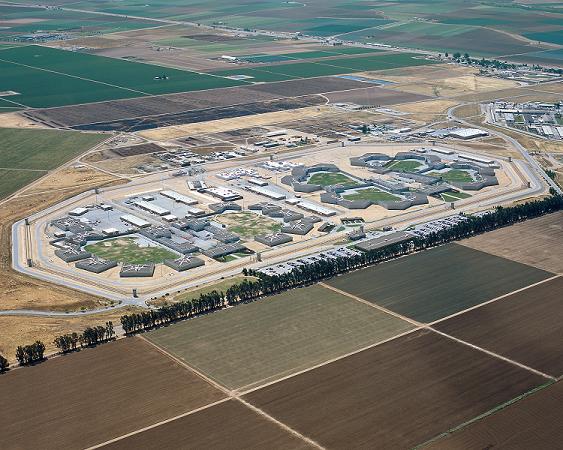Editor’s Note: California is transferring many prison inmates to jails in their counties of origin, a process known as Realignment that will impact the San Francisco Sheriff’s Department. Mayor Ed Lee removed the elected head of that department last week, and the process for determining whether Lee acted appropriately could take months. With that context in mind, we present this inside look at Realignment by Eugene Alexander Day, a third strike inmate at Soledad Prison who will be writing occasional articles about prison life for the Guardian.
A perfect storm is brewing. An unparalleled crisis in corrections is exacerbated by an even worse economy. As a reform-minded inmate buried under a life sentence, it feels like hope is on the horizon. Judicial oversight is the cornerstone.
Due to a murderous and unconstitutional medical department, the Supreme Court implemented a population cap on the California Department of Corrections and Rehabilitation (CDCR). December marked the first of four benchmarks. By mid-2013, the prison population must be brought down by 33,000 inmates.
In response, the Legislature passed Prison Realignment (AB 109), which started in October. Once the dust of Realignment settles, state facilities will become the sole domain of real criminals. Serious and violent offenders, called “strikers,” must serve 80 to 85 percent of their sentences. The rest of us are serving life sentences for third strikes, murders, or other violent crimes.
Under Realignment, the counties will maintain custody of those eligible for day-for-day time credits, called “half-timers,” which includes parole violators. For years, experts have been calling for such a shift. Stemming the flow of parole violators and nonviolent, non-serious, and non-sexual offenders, called the three “nons,” is the first real attempt by the state to do the right thing.
By ignoring the evidence for so long, austerity measures and public safety are extremely difficult to reconcile due to judicial oversight. In 2007, Gov. Schwarzenegger convened an expert panel that crafted a road map of rehabilitative recommendations to address overcrowding. The state’s other expert panel, the socially irresponsible Legislature, instead chose to double-down on a bad bet.
Under the banner of building more prisons, underscored by sending inmates out-of-state, some of Schwarzenegger’s panel’s rehabilitative recommendations were codified as unfunded mandates. When the economy took a dive in 2008, the state lawyered up – and got its ass kicked in court.
It took some of the sting off my life sentence when the Supreme Court smashed the CDCR in 2011. Systemic mismanagement corrupted a generation of salvageable prisoners. As someone who lives, breathes, and sleeps the politics of justice, the Legislature didn’t simply kick the can down the road – it pushed the state closer to the precipice. State leaders have set a poor example. By failing to follow the evidence in 2007, all 58 counties had Realignment shoved down their throats in 2011.
This lens through which I see the world is depicted as “synchronized drowning” by Attorney General Kamala Harris. For the last 13 years, I’ve struggled to keep my wits in this sea of despair. Deviants need structured treatment, not more of the same. Shifting the responsibility of tens of thousands of offenders away from CDCR is an idea of brilliant simplicity.
Local law enforcement, prosecutors, and the courts are better suited to solve local problems. These offenders are members of your community. The next time the task force stomps through the ghetto snatching up people of color, they must think about how to house all of these people of imperfection. Good. Most need help, not a jackboot.
To continually be considered part of this particular problem is unacceptable. In her book Monster Factory, Sunny Schwartz opined that everyone from civilians to officers to prisoners “were collaborators in a system that accepted and invested in failure.” No one is exempt. Everyone is to blame. Lives are at stake.
Both Schwartz and Harris describe jails and prisons as crime colleges. I feel like I received tenure in the worst-performing school district in the nation. Untreated criminogenic factors give serious offenders the artistic license to develop unholy subsocietal norms. We sow the seeds of recidivism when low-risk offenders are subjected to our gangbanger, dope-fiend bullshit. Parole violators and the three “nons” are low-hanging fruit: easy to treat and even easier to corrupt.
The counties might hate Realignment, but I hate the fact it took so long. Marking a happy day in this collaborator’s miserable life, a whole class of offenders have been diverted away from the Monster Factory. Excellent. Realignment is not some hug-a-thug program. It’s basic math. So used to being treated like shit, I will die before I advocate for mollycoddling prisoners. Using offenders as earmarks to maintain an unsustainable status quo is a feeling worse than death. Fix the problem.
My dreams are skewed. In my way of thinking, prisons should become factories that turn monsters into advocates for social justice. Offenders need to learn the difference between pro-social and antisocial behavior, not how to shove dope up their asses or participate in a riot.

